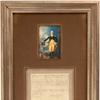WE MUST BECOME IDEALISTS OR DIE: GUSTAV METZGER at Museo Jumex
- MEXICO CITY, Mexico
- /
- July 01, 2015
From July 18 to October 25, 2015, Museo Jumex will present the first solo exhibition in Mexico of the work of the influential artist and activist Gustav Metzger. The exhibition, titled We Must Become Idealists or Die. Gustav Metzger, features work spanning six decades and explores how the use of texts, symposia, and calls for public participation have been essential to Metzger’s artistic practice. One seminal example of each will be used as the starting point for the exhibition: Metzger’s manifesto Auto-Destructive Art (1959), the Destruction in Art Symposium held in London in 1966, and Three Years Without Art 1977–1980.
Guest curated by Daniela Pérez, Curator and Deputy Director of Artistic Programming at Museo Tamayo and Co-Founder of de sitio, We Must Become Idealists or Die. Gustav Metzger features works from 1959 to the present including writings, works on paper, ephemera, photographs, videos, models and projects for sculptures and three-dimensional and projected installation works. The exhibition highlights the interdependency between the artist’s core concepts of "auto-destructive" and "auto-creative" art. In the early 1960s, Metzger was one of a significant number of artists in Europe and the Americas who used everyday or industrial materials to create art objects that would decay or break apart over time, and he called these works “auto-destructive.” In contrast, “auto-creative” works focus on growth instead of destruction and use technology to orchestrate processes of positive change.
Since the 1950s, Gustav Metzger has used art to encourage discussion of public issues. Through the artworks in We Must Become Idealists or Die. Gustav Metzger, the artist creates opportunities to reflect on issues such as inequality, nuclear weapons, genetic engineering and environmental extinction. Local audiences will have the opportunity to contribute directly to the exhibition by donating newspapers for use in Mass Media: Today and Yesterday (2011/2015), an ongoing participatory work in which visitors are asked to cut out articles related to extinction and pin them on a bulletin board, or may discard old batteries in a container placed at the museum’s entrance as part of Spent Batteries (1999/2015).
Additional exhibition highlights include Supportive (1965/2013) Metzger’s monumental “auto-creative” work, which uses heat-sensitive liquid crystals to create changing colorful patterns that are projected onto seven 4 X 4 m screens. Another major work, which comes from the artist’s Historic Photographs series of the 1990s, is To Walk Into. Massacre on the Mount, Jerusalem, a greatly enlarged newspaper photograph of the October 1990 “Massacre on the Mount” in Jerusalem, which is placed behind a linen curtain, so that viewers may engage with the photograph as they choose. Mobbile (1970/2015) is a mobile sculpture comprising a plant that is placed inside a clear Plexiglas box, which is affixed to the top of a car that is then driven through Mexico City or left idling in front of the museum. The vehicle’s exhaust pipe is connected to the box, so that viewers may see the effects of the exhaust fumes that are fed to the plant.
We Must Become Idealists or Die. Gustav Metzger includes works recreated following the artists’ instructions, as well as works on loan from the Sohm Archive, Stuttgart, Germany; The Tate, London, UK; Musée d'Art Contemporain, Lyon, France; and the artist’s private collection.
On October 3, 2015, the museum will present a symposium related to the exhibition. Details will follow.
ABOUT THE ARTIST
Artist and political activist Gustav Metzger was born in 1926 in Nuremberg, Germany. In 1939, he was sent to England in a rescue operation for Jewish children. This experience strongly marked his personal and professional life, and for decades his work has focused on generating discussion and debate in order to impact social consciousness.
As a young man, Metzger studied at various art schools in England and Belgium, beginning his career as a painter. In 1959, he abandoned painting and began to create artworks with everyday objects (such as cardboard, newspapers and plastic bags) and industrial materials that were meant to decay and eventually fall apart. This marked the beginning of his Auto-Destructive work.
Metzger’s works can be found in the permanent collections of major institutions including Tate Modern in London and the Musée d'Art Contemporain in Lyon. His work has been presented in solo exhibitions at The New Museum in New York (2011), the Serpentine Gallery in London (2009), Zacheta National Gallery in Warsaw (2007), Westfälischer Kunstverein in Munster (2007), Lunds Konsthall in Sweden (2006) and the Generali Foundation in Vienna (2005). His work has also been included in major group exhibitions including the 2011 São Paulo Biennale, the 2009 Tate Triennial, the 2008 Yokohama Triennial and the 2007 Skulptur Projekte Münster.
Metzger lives and works in London but considers himself to be stateless.
MUSEO JUMEX
Miguel de Cervantes Saavedra 303
Col. Ampliación Granada
11529, MEXICO, DF
T. +52 (55) 5395 2615/18

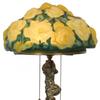
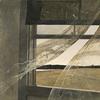




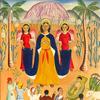
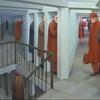

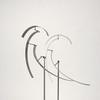

Ser100x100_c.jpg)

